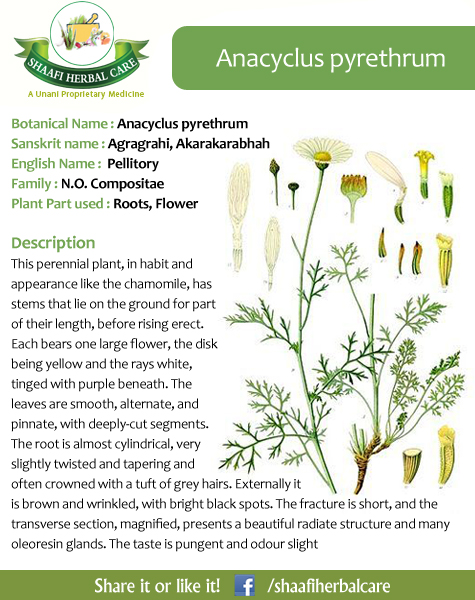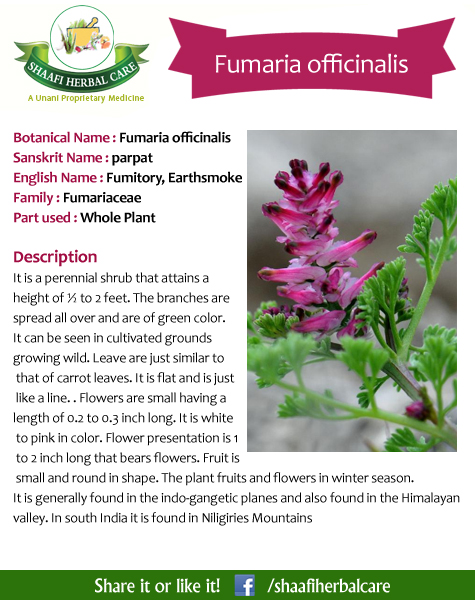
Description of Anacyclus pyrethrum:
This perennial plant, in habit and appearance like the chamomile, has stems that lie on the ground for part of their length, before rising erect. Each bears one large flower, the disk being yellow and the rays white, tinged with purple beneath. The leaves are smooth, alternate, and pinnate, with deeply-cut segments.
The root is almost cylindrical, very slightly twisted and tapering and often crowned with a tuft of grey hairs. Externally it is brown and wrinkled, with bright black spots. The fracture is short, and the transverse section, magnified, presents a beautiful radiate structure and many oleoresin glands. The taste is pungent and odour slight.
Constituents:
Analysis has shown a brown, resinous, acrid substance, insoluble in potassium hydroxide and probably containing pelletonin, two oils soluble in potassium hydroxide – one dark brown and acrid, the other yellow tannin, gum, potassium sulphate and carbonate, potassium chloride, calcium phosphate and carbonate, silica, alumina, lignin, etc.
An alkaloid, Pyrethrine, yielding pyrethric acid, is stated to be the active principle.
Toxicology:
It has no toxic effect on body when taken in normal quantity.
Medicinal Uses:
Roots- used in rheumatoid arthritis, toothache and in preparation of toothpaste. In Europe, tincure as local irritant. Root as gargle in sore throat. It is also used in sexual disorder in males. Roots along with roots of withania somnifera and Vitis vinifera used in epilepsy. It also possesses antibacterial properties.


